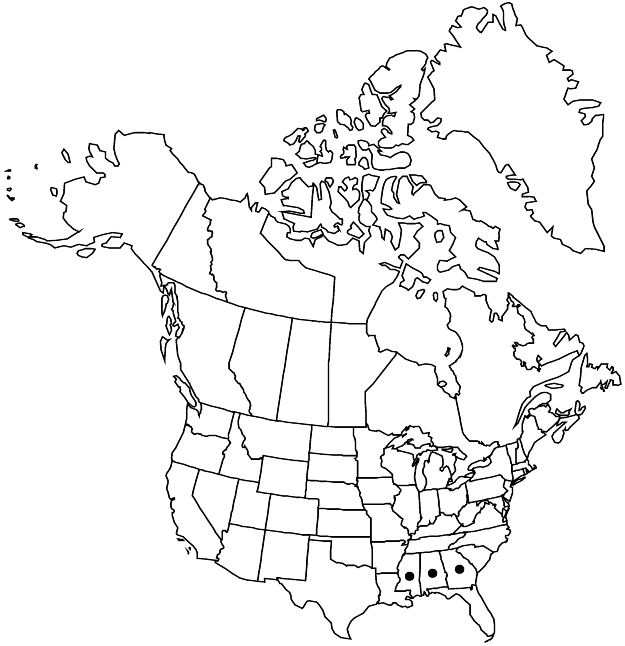Crataegus pinetorum
Bot. Gaz. 30: 343. 1900.
Shrubs or trees, 20–60 dm. Stems: twigs: new growth strongly reddish, 1-year old shiny reddish-brown, 2d year dull gray-brown, older dull gray; thorns on twigs usually present, ± straight, 1-year old shiny black or reddish black, 2-years old becoming black, fine, 2–3.5 cm. Leaves: petiole length 25–30% blade, sparsely to densely glandular or stipitate-glandular; blade narrowly ovate to narrowly elliptic, 4–6 cm (nearly mature at anthesis), base cuneate, lobes 2 or 3 per side, sinuses shallow, max LII 10–30%, lobe apex acute, margins with extremely small teeth, veins 5 or 6 per side, apex acute, vein pubescence not recorded. Inflorescences 2–4-flowered; branches glabrous; bracteoles ± persistent, numerous, narrowly obovate, chartaceous to subherbaceous, margins densely glandular. Flowers at anthesis not recorded; sepals narrowly triangular, 6 mm, margins finely glandular-serrate, abaxially glabrous; anther color not recorded; style number not recorded. Pomes dull red, suborbicular, 12–14 mm diam.; sepals erose; pyrenes 2–4.2n = 51.
Phenology: Flowering Apr; fruiting Sep–Oct.
Habitat: Woodland edges and gaps
Elevation: 100–200 m
Distribution

Ala., Ga., Miss.
Discussion
Crataegus pinetorum is found from south-central Mississippi through Alabama to northern Georgia; it appears to be scarce. The species is most similar to C. pulcherrima, differing in its sharply, rather than obtusely, lobed leaves, often densely glandular petioles, exceptionally small leaf marginal teeth and red pomes. The species also somewhat resembles the more deeply incised forms of C. gilva.
Selected References
None.
Lower Taxa
"thin" is not a number."stipitate-glandular" is not a number. "glandular" is not a number."adnate" is not a number."dm" is not declared as a valid unit of measurement for this property.